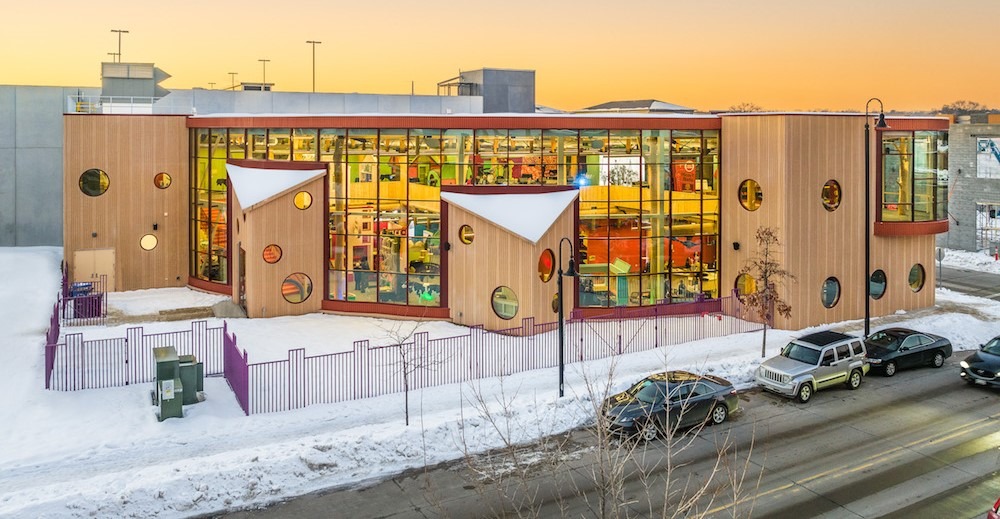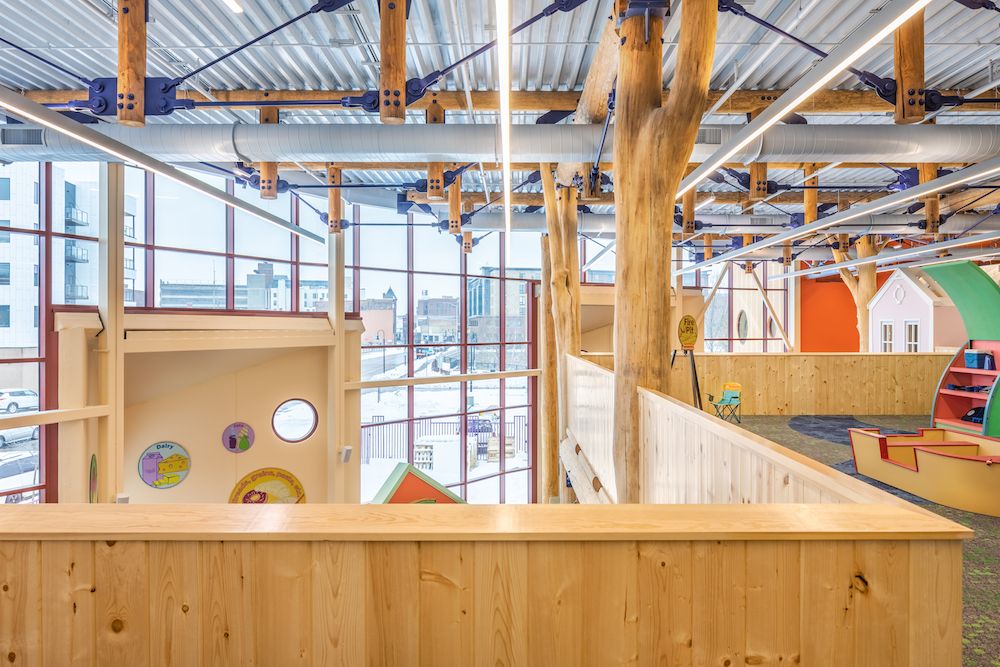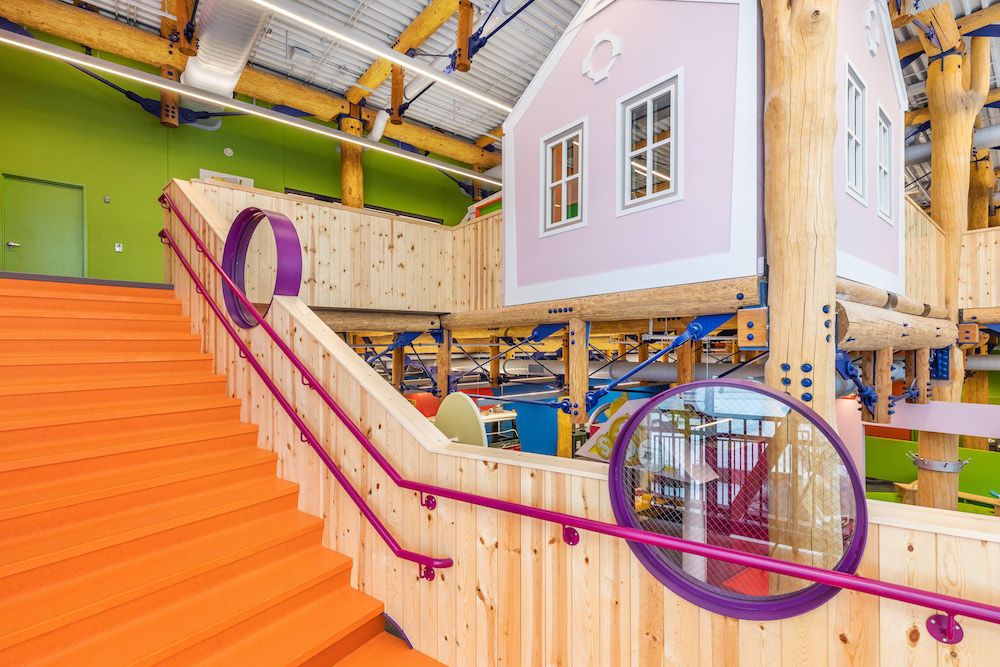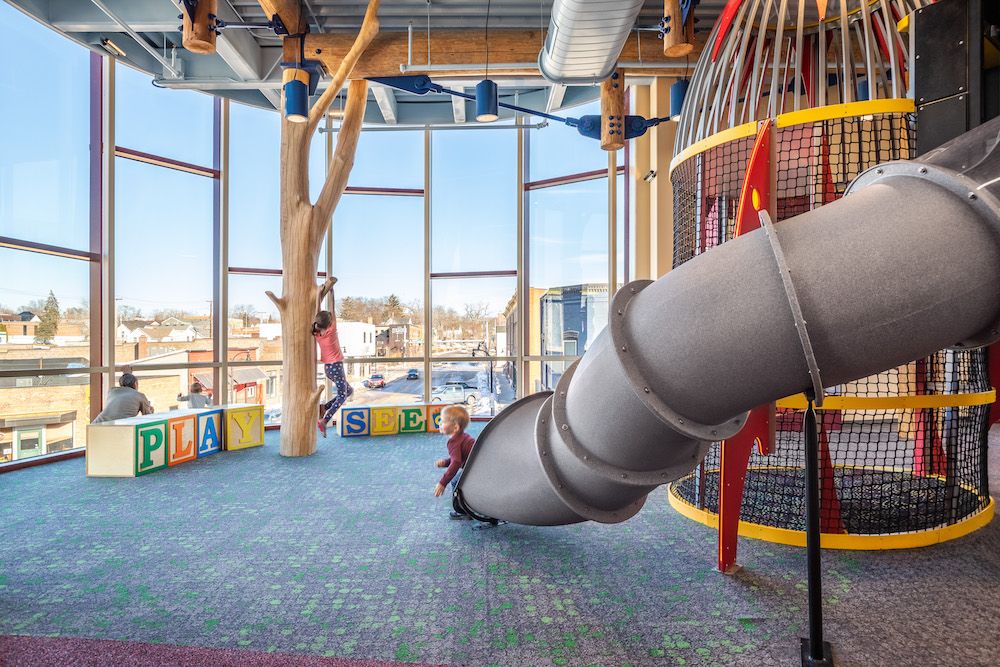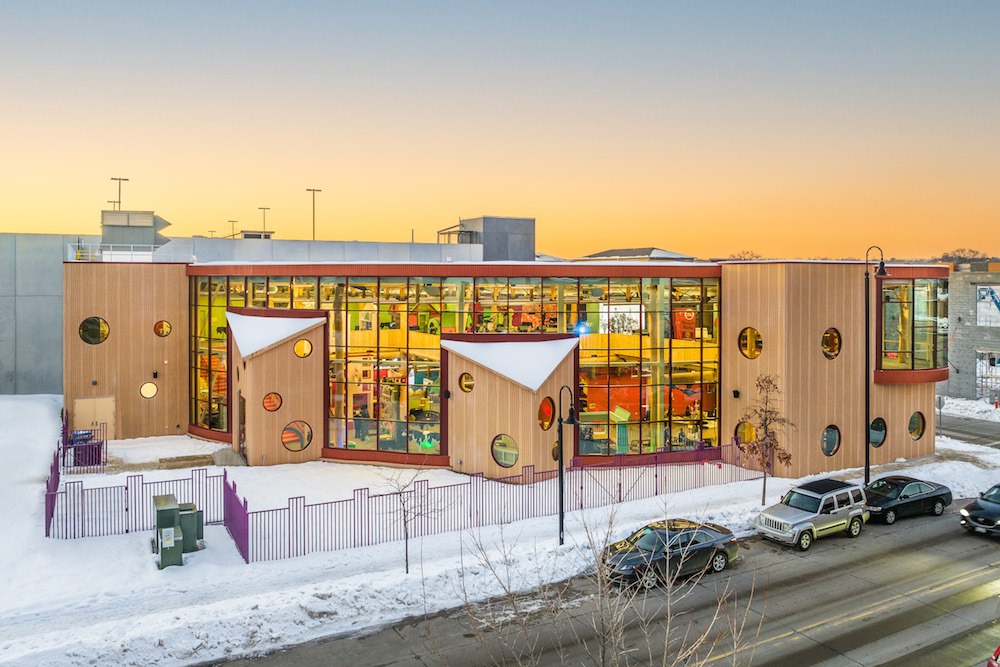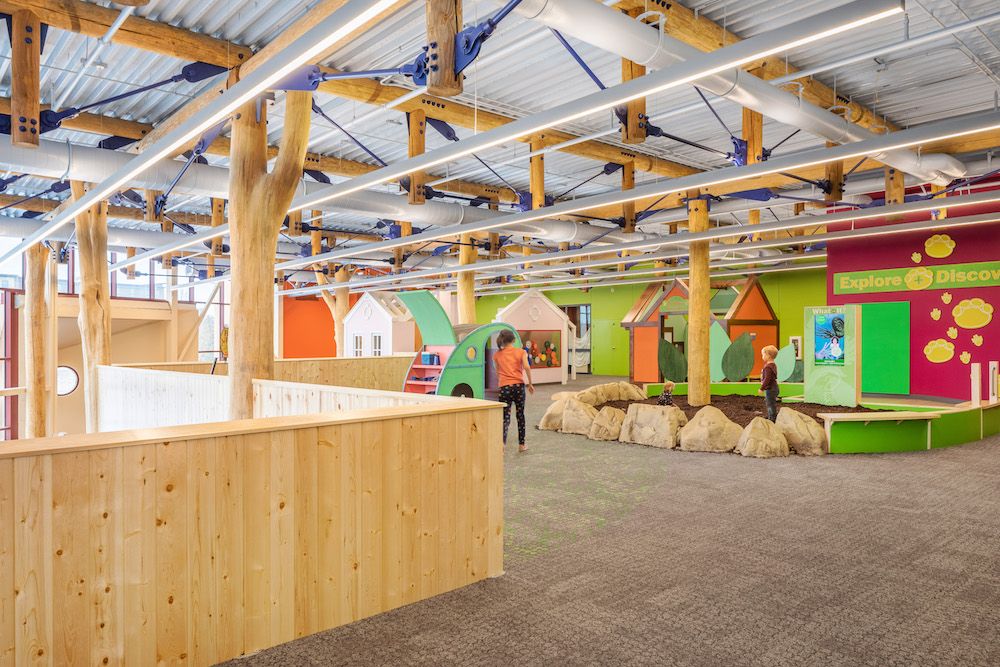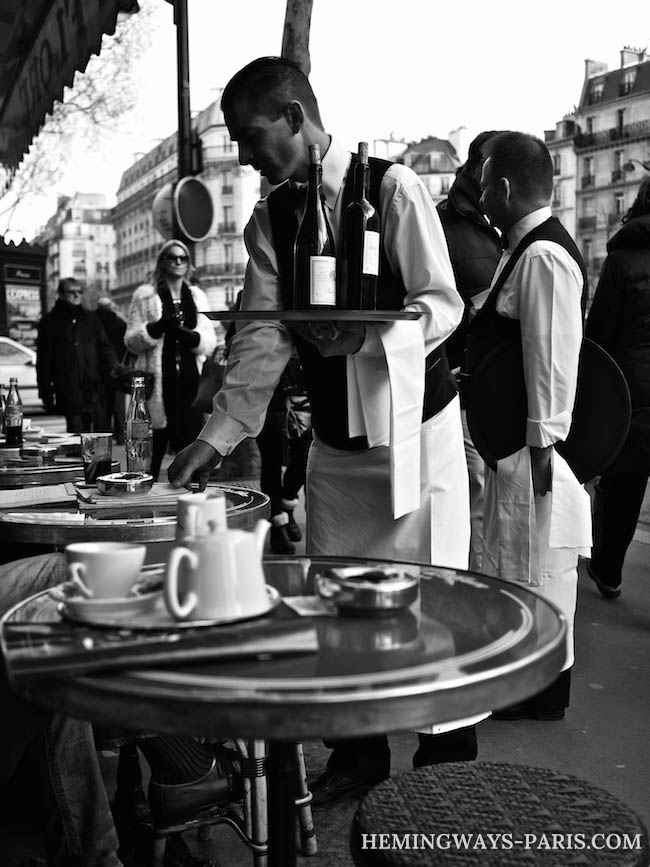A trade show encounter between a materials-driven architect and a supplier of structural round timber has led to one of the most whimsical museum designs in recent memory:
It’s the Eau Claire Children’s Museum in Wisconsin, a nature-friendly environment for learning designed by Malcolm Holzman of Los Angeles-based Steinberg Hart
“Malcolm was mulling over the museum and how to design it as a net-neutral, carbon design project,” says Amelia Baxter, co-Founder and CEO of Whole Trees Structures. “It was to have geothermal walls and solar panels.”
Holzman is the author of “Material Life: Adventures and Discoveries in Materials Research.” Whole Trees Structures is a Wisconsin-based firm with the vision of transforming a carbon-emitting construction industry with the healing power of forests.
The firm buys its trees, 50 to 60 years old, from foresters all over the country. There’s Doug Fir from Maine, Wisconsin, Oregon, Washington, Western Red Cedar from the Northwest and Black Locust from Wisconsin, North Carolina and New England.
“What’s unique is that we’re able to trace back the source of materials and bring that to the job site, so it directly connects users to where their trees came from,” she says. “It’s interesting to architects and owners, because the mass timber product can be tied to a regional ecosystem.”
Better yet, carbon is stored in the wood, and a healthy forest management system increases the carbon uptake of the forest itself. “The forest has a natural uptake as it grows,” she says. “The rates of carbon uptake are based on where it’s located and how it’s managed.”
For the children’s museum, Holzman wanted to design a two-story structural system that was evocative of a forest – but a playful one. Baxter’s group and Seattle’s KPFF became consulting engineers for it.
The architect specifically requested ash trees because of their backstory. They’re a key species in Wisconsin, but also a dying one – a victim of infestation from the emerald ash borer.
Baxter suggested a second species. “We said: ‘You need sugar maple in the atrium because they grow very straight with outshooting branches,’” she says. “He said: ‘As long as they look like these playful things I want.’”
The architect drew up a grid for the museum’s columns and handed it off to Baxter. Whole Trees Structures then assured that timber was selectively harvested by its suppliers. “They’re thoughtfully removing timber and leaving timber behind, to achieve different purposes,” she says.
The end result is a structure that’s clear about what it is – which is tree-like. “What we wanted was the pleasure of a biophilic, round form that’s thoughtfully designed,” she says. “We knew that whatever he did would be wonderful and complement what we do with timber.”
The museum lies within a small footprint, taking up less than 35,000 square feet. But its curtain wall creates a dynamic presence within its rectangular city space. “Its centerpiece is a tree, and at its corner is a window wall where you see it lit up on the second floor,” she says.
Inside, Holzman’s columns create a friendly, interactive experience where children routinely approach them, reach out to touch them – and hug them. A stairwell guides adults to acoompany their children up to the second floor. “They get off their phones and walk up and focus on the atrium,” she says. “It brings an interactive experience to parents and toddlers alike.”
It may be designed as a children’s museum, but it’s meant to open the eyes of adults as well.

